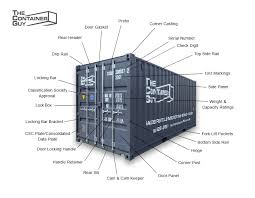Understanding Key Cargo Shipping Terms: A Comprehensive Guide

The world of cargo shipping can be complex, with a multitude of terms and jargon that may seem overwhelming, especially for those new to the industry. Whether you’re importing, exporting, or managing logistics for your business, it’s essential to have a solid grasp of these shipping terms. Understanding the language of cargo shipping will help you navigate contracts, manage costs, and ensure smooth logistics operations. Below is a comprehensive guide to some of the most commonly used cargo shipping terms.
1. Bill of Lading (B/L)
A Bill of Lading is one of the most important documents in cargo shipping. It acts as a receipt of the shipment, a contract between the shipper and the carrier, and a document of title. The B/L outlines the type, quantity, and destination of the goods being shipped. The shipper and the receiver must keep this document for reference throughout the shipping process.
2. Freight Forwarder
A Freight Forwarder is a company that organizes shipments on behalf of individuals or businesses. They coordinate the logistics of transporting goods, dealing with customs documentation, and managing cargo from the point of origin to its destination. Freight forwarders often negotiate freight rates, choose the best shipping routes, and provide warehousing services.
3. Incoterms
Incoterms (International Commercial Terms) are a series of pre-defined commercial terms established by the International Chamber of Commerce (ICC). These terms clarify the roles and responsibilities of buyers and sellers during the shipping process, including who bears the cost of transportation, insurance, and customs duties. Common Incoterms include:
- FOB (Free on Board): The seller is responsible for transporting the goods to the port of shipment, while the buyer covers the cost of shipping and insurance.
- CIF (Cost, Insurance, and Freight): The seller covers the cost of transporting the goods, including insurance, to the buyer’s port of destination.
- EXW (Ex Works): The buyer assumes responsibility for the transportation and costs once the goods leave the seller’s premises.
4. Customs Clearance
Customs Clearance is the process of preparing and submitting the necessary documentation to allow goods to enter or exit a country. Importers and exporters must comply with regulations, tariffs, and duties imposed by customs authorities. Proper customs clearance is essential for ensuring the timely delivery of goods.
5. Demurrage
Demurrage refers to charges incurred when cargo is not moved out of the terminal or port within the agreed-upon timeframe. This happens when importers or exporters fail to pick up their containers or leave them at the terminal too long, resulting in additional costs from the carrier.
6. TEU (Twenty-foot Equivalent Unit)
A TEU is a standard measurement used to describe the capacity of cargo containers. One TEU represents the size of a standard 20-foot container. Larger vessels often measure their capacity in TEUs. For example, a container ship with a capacity of 10,000 TEUs can carry 10,000 20-foot containers.
7. Freight Rate
A Freight Rate is the cost charged by a carrier for the transportation of goods. It can vary based on several factors, such as the type of cargo, the distance traveled, the mode of transportation (air, sea, or land), and the current market demand for shipping.
8. FCL and LCL
- FCL (Full Container Load): This term refers to when a single shipper uses an entire container to transport their goods.
- LCL (Less than Container Load): In contrast, LCL shipping involves consolidating multiple smaller shipments from different shippers into one container. This method is cost-effective for smaller shipments but can take longer due to the need to consolidate and deconsolidate cargo.
9. Container Freight Station (CFS)
A Container Freight Station is a facility where cargo is consolidated or deconsolidated before or after it is shipped. In the case of LCL shipments, the cargo is moved to a CFS to be combined with other shipments. These stations also handle customs inspections, storage, and distribution.
10. Lead Time
Lead Time refers to the amount of time it takes from when an order is placed to when it is delivered. In the context of shipping, this includes the time for production, customs clearance, loading, and transportation. Efficient lead time management is critical for businesses to maintain inventory levels and avoid disruptions in the supply chain.
11. Certificate of Origin
A Certificate of Origin is a document that certifies the country where the shipped goods were manufactured. This certificate is often required by customs authorities to determine if the goods are eligible for preferential tariffs or are subject to import duties.
12. Cargo Insurance
Cargo Insurance protects the shipper or consignee from potential loss or damage to goods during transit. It covers a variety of risks, including damage due to natural disasters, accidents, or theft. Depending on the value and nature of the cargo, insurance policies can vary in coverage.
13. ETA (Estimated Time of Arrival)
ETA is the estimated time when the shipment will arrive at its final destination. Carriers provide ETA updates to keep shippers and consignees informed about the status of their cargo.
Conclusion
Navigating the complex world of cargo shipping becomes much easier when you understand the key terms involved. Whether you’re new to shipping or a seasoned professional, keeping these essential terms in mind will help you effectively manage your shipments and avoid potential delays or extra costs. Understanding the logistics jargon ensures smoother operations and a better flow of communication between all parties involved.